|
We visited The
Louvre
in May 2003
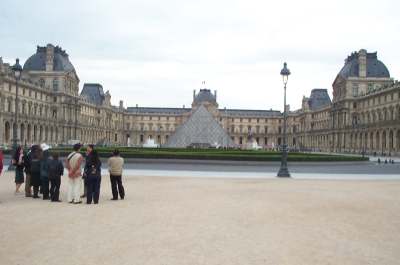 |
|
| The Louvre is famous for the glass pyramid entrance |
|
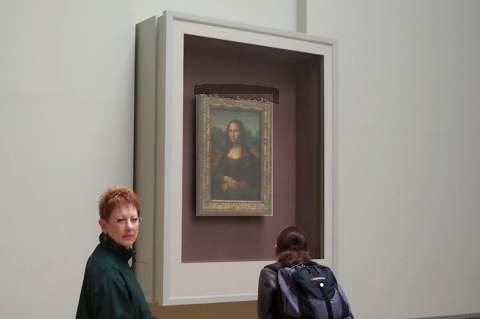
|
Lisa Gherardini, wife of Francesco Giocondo
The history of the Mona Lisa is
shrouded in mystery. Among the aspects which remain unclear are the exact
identity of the sitter, who commissioned the portrait, how long Leonardo
worked on the painting, how long he kept it, and how it came to be in the
French royal collection.
The portrait may have been painted to mark one of two events - either when
Francesco del Giocondo and his wife bought their own house in 1503, or when
their second son, Andrea, was born in December 1502 after the death of a
daughter in 1499. The delicate dark veil that covers Mona Lisa's hair is
sometimes considered a mourning veil. In fact, such veils were commonly worn
as a mark of virtue. Her clothing is unremarkable. Neither the yellow
sleeves of her gown, nor her pleated gown, nor the scarf delicately draped
round her shoulders are signs of aristocratic status. |
| We got to the
Mona Lisa
without crowds.............. |
|
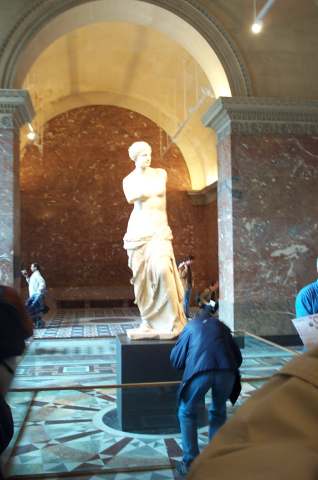 |
There’s nothing more frustrating than studying Greek art,
given that the originals are so few and far between and are never seen in
their original state. Could you imagine this statue with arms, and adorned
with jewelry and color? The Venus de Milo, or Aphrodite of Melos (named
after the Greek island on which it was discovered in 1820), is one of these
magnificent originals. Her naked torso enabled her to be identified as
Aphrodite, the Roman Venus, goddess of love and beauty, born out of the foam
of the sea. And with her, Greek art gave birth to all Western art’s female
nudes. Certain stylistic details indicate a dating of around 100 BC. Her
elongated silhouette, position in space, and very sensual, realistic nudity
link this work to the Hellenistic period (323–31 BC), the last great era in
Greek history. Her neutral, impassive face, however, forms a stark contrast,
rather like a mask that has been added on. Timeless and emotionless, it is
comprised of a play on proportions: it is three times as long as the nose,
which is a continuation of the forehead in this “Greek profile” — which the
Greeks, of course, did not actually have! What the sculptor was seeking to
depict was divine beauty, that of Plato’s ideals, not worldly reality. This
image “that expresses beauty in a language which is always our own” (Alain
Pasquier) provides a fine answer to the eternal quest for Beauty; in short,
it is a timeless masterpiece. |
|
Venus
de Milo |
|
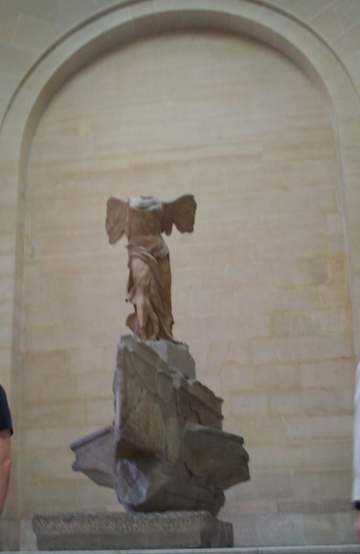 |
Winged Victory of Samothrace
The winged goddess
of Victory standing on the prow of a ship overlooked the Sanctuary of the
Great Gods on the island of Samothrace. This monument was probably an ex-voto
offered by the people of Rhodes in commemoration of a naval victory in the
early second century BC. The theatrical stance, vigorous movement, and
billowing drapery of this Hellenistic sculpture are combined with references
to the Classical period-prefiguring the baroque aestheticism of the
Pergamene sculptors.
|
| |
|
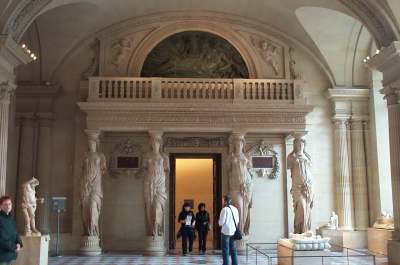 |
|
| |
|
|






